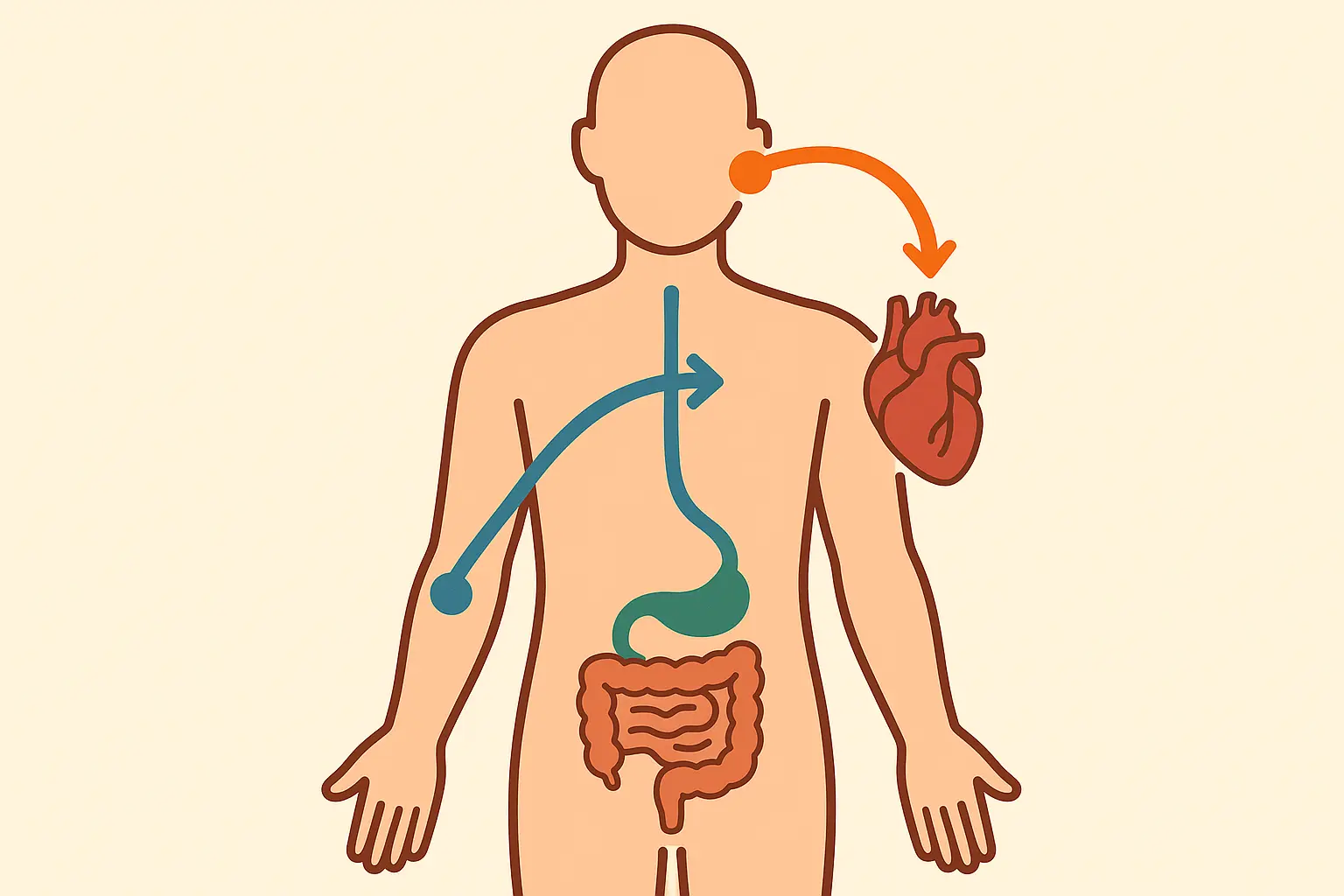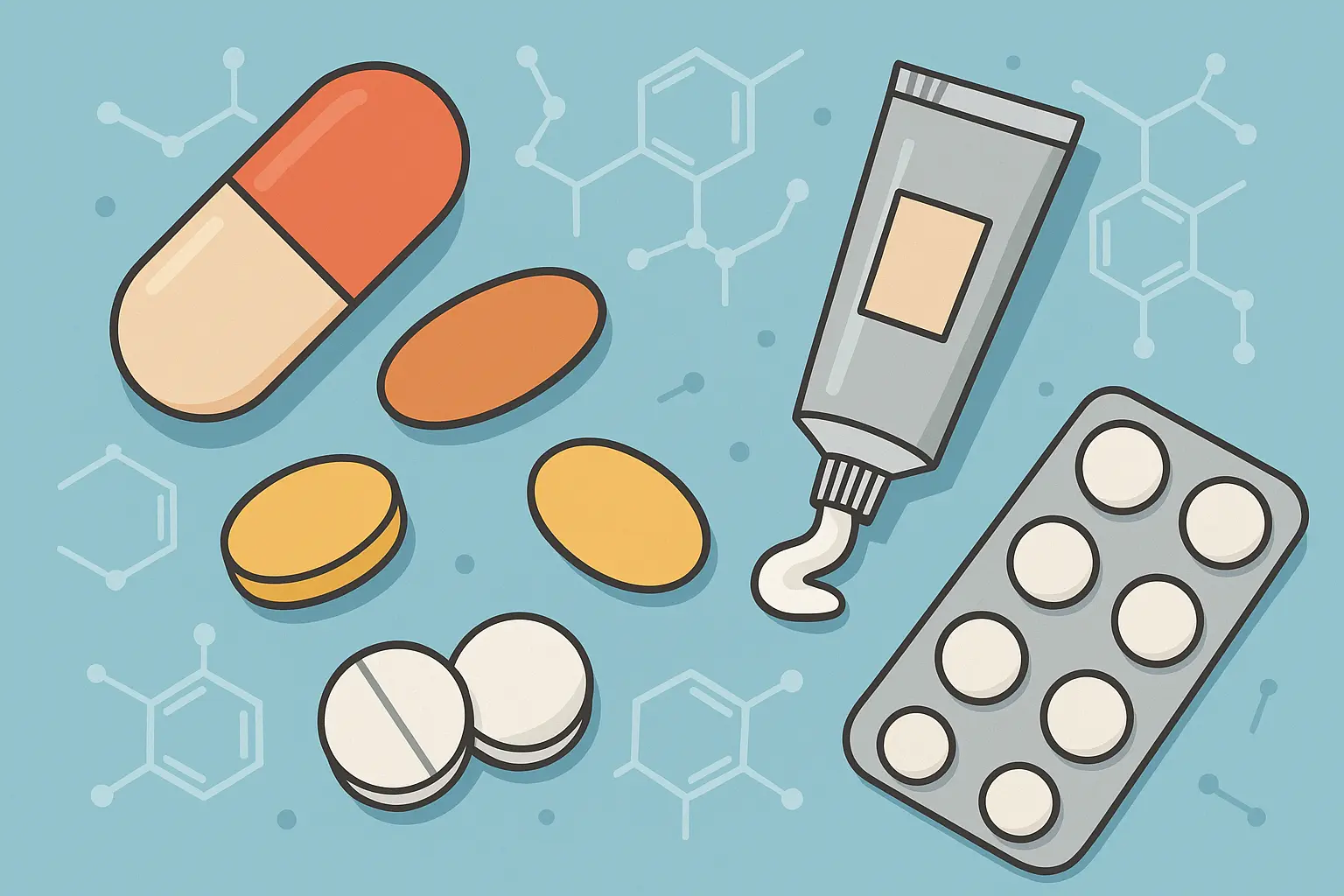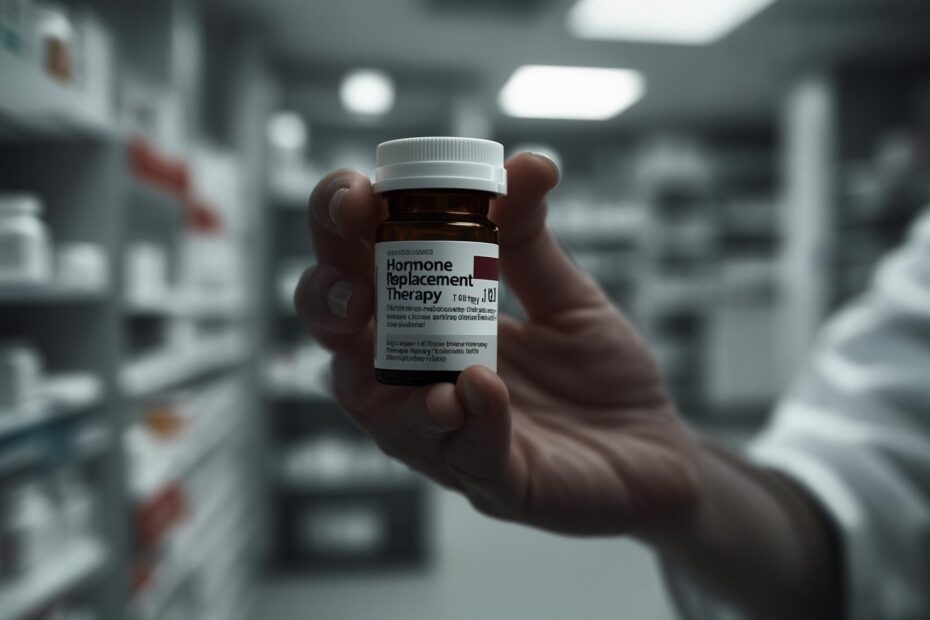
Three months ago, I was dragging myself through each day, feeling like I was walking through fog. My doctor had prescribed 200mg of progesterone, and while it helped my sleep, I felt like a zombie during the day. Sound familiar? If you’re nodding along, you’re not alone.
I’ve been diving deep into hormone replacement therapy research lately, and what I’ve discovered about progesterone dosing has honestly shocked me. Here’s the thing – most women starting HRT are getting prescribed progesterone doses that are way higher than what they actually need. At Midi Health, practitioners typically start with 100mg daily, but here’s what’s wild: many women achieve complete benefits with doses as low as 25-50mg when we actually pay attention to how their individual bodies work.
Here’s something that really caught my attention: according to Midi Health, about half of women experience sleep problems during menopause, making progesterone’s sleep-promoting effects valuable even at tiny doses. This means we might be missing opportunities to help women with much gentler approaches – and honestly, that breaks my heart.
Table of Contents
- Why Your Doctor’s “Standard” Dose Might Be All Wrong for You
- How Your Body Processes Hormones (And Why We’re All Different)
- The Timing Trick That Can Cut Your Dose in Half
- Why Pills Aren’t Always the Answer (And What Works Better)
- Finding Your Sweet Spot Without the Guesswork
- How to Track What’s Actually Working
- When Tiny Doses Pack a Powerful Punch
- Your Genetic Blueprint: The Game-Changer You Need to Know About
- Making Every Milligram Count
- What I Wish I’d Known from Day One
TL;DR (Because Who Has Time?)
- Some of us burn through hormones like race cars burn fuel – we need frequent tiny doses (12.5-25mg) instead of one big hit
- You might be one of the lucky ones who only needs 25-50mg daily because your body grabs onto every bit of progesterone
- Take it 90-120 minutes before bed and watch the magic happen, even with smaller doses
- Creams and drops under your tongue can work with 50-70% less hormone than pills
- Your estrogen situation directly affects how much progesterone you actually need
- Genetic testing can tell you if you’re someone who only needs 12.5mg (yes, really!)
- Better formulations mean you can often cut your dose way down
- Your body knows what’s working – trust it more than arbitrary protocols
Why Your Doctor’s “Standard” Dose Might Be All Wrong for You
Look, I get it. Your doctor went to medical school, and you didn’t. But here’s the thing – most doctors prescribe progesterone using outdated one-size-fits-all approaches that completely ignore how different we all are. It’s like prescribing the same shoe size to every woman and wondering why some people can’t walk comfortably.
I’ve been following what’s happening in the HRT world, and it’s pretty exciting. Gedeon Richter UK has launched Nalvee (PharmaTime), a formulation that works at doses 10 to 20 times lower than what we typically use. That’s not a typo – we’re talking about getting the same results with a fraction of the hormone.
Understanding the importance of genetics in personalized healthcare is like finally getting your body’s instruction manual instead of trying to figure everything out by trial and error.
We’re All Hormone-Processing Snowflakes
Your body processes progesterone through specific enzymes, and here’s the kicker – these vary dramatically between women because of our genetics. Think of it like this: some of us have hormone-processing engines that run like Ferrari race cars, burning through everything quickly. Others have steady, efficient engines that make every drop of hormone count.
What blows my mind is how these differences affect everything from how fast progesterone leaves your system to how sensitive your body is to it. I’ve worked with women who need tiny doses multiple times a day because they process it so quickly, while others can take progesterone every other day and still feel great.

| Your Hormone Type | What This Means for You | Your Best Strategy | Typical Dose Range |
|---|---|---|---|
| The Race Car | You burn through hormones super fast | Small doses throughout the day | 12.5-25mg 2-3x daily |
| The Steady Eddie | Normal processing speed | Once-daily dosing works great | 50-100mg daily |
| The Slow & Steady | Hormones stick around longer | Lower doses, less often | 25-50mg daily or every other day |
| The Super Responder | Your body grabs onto every hormone molecule | Tiny doses with big effects | 12.5-25mg daily |
Race Cars vs. Steady Engines: The Dosing Game-Changer
Here’s what’s fascinating – if you’re a race car type, you often do better with frequent small doses rather than one big dose that hits you like a sledgehammer. Meanwhile, if you’re steady and efficient, you might get complete relief with surprisingly small amounts.
Take my friend Sarah – she’s juggling a demanding job, teenagers, and aging parents. She was so tired from her 200mg progesterone dose that she was falling asleep in meetings. Genetic testing showed she was a race car type. By switching to 25mg three times daily (just 75mg total), she got better sleep and mood stability without feeling like she’d been drugged. Her experience perfectly shows how working with your body instead of against it changes everything.
The key insight? More isn’t always better. Race car types who take large single doses often experience a rollercoaster – high levels that drop off quickly, leading to breakthrough symptoms. Breaking that same dose into smaller amounts keeps things steady all day.
When Your Body is a Hormone-Grabbing Champion
Some women have naturally super-sensitive progesterone receptors – think of them as having tons of parking spots that grab onto every bit of progesterone that comes by. These lucky folks might get complete relief with what would seem like pediatric doses to the rest of us.
I’m always amazed when I work with women who achieve total symptom relief with 12.5mg daily. Their progesterone receptors are so efficient that tiny amounts produce huge effects. It’s like having a really good sound system – you don’t need to crank the volume to get beautiful music.
How Your Body Processes Hormones (And Why We’re All Different)
Every woman’s body has its own unique pattern for handling progesterone – kind of like how we all have different fingerprints. Understanding your personal pattern helps you figure out whether you’re likely to need tiny doses or standard amounts, without months of frustrating trial and error.
When women ask me about finding the lowest dose of progesterone for HRT that actually works for them, I always start with this: your body is constantly giving you feedback. Some women have liver enzymes that work overtime, breaking down progesterone before it can do its job. Others have receptors that hold onto every molecule like it’s precious gold.
For women dealing with sleep issues during hormonal changes, understanding how your body processes progesterone becomes even more important. This works hand-in-hand with sleep hygiene protocols that support your body’s natural hormone rhythm.
Timing is Everything: When Less Becomes More
Your body naturally produces progesterone in the evening – that’s when it expects to see it. When you work with this natural rhythm instead of against it, you can often get the same results with way less hormone. I’ve seen women cut their doses by 40-50% just by getting the timing right.
Think of it like swimming with the current instead of against it. Your body is already primed for progesterone in the evening, so that’s when even small doses pack the biggest punch.

The 90-Minute Sleep Magic
Here’s a timing trick that can be a total game-changer: take your progesterone 90-120 minutes before you want to sleep. This gives your body time to convert it into compounds that actually help you sleep better. When you nail this timing, you might find you need way less progesterone to get great sleep.
This isn’t just about convenience – it’s based on how long your body needs to turn progesterone into its sleep-promoting forms. The relationship between progesterone and sleep becomes even more powerful when you combine it with good sleep hygiene habits that naturally support your hormones.
What’s cool is that women who follow this 90-minute rule often reduce their progesterone dose while actually sleeping better. The timing makes every milligram work harder for you.
The Multiple Mini-Dose Approach
Some practitioners are trying something interesting – splitting doses throughout the day instead of one big dose. This matches your body’s natural hormone patterns better and can reduce side effects while keeping you feeling good all day.
Your Mini-Dose Game Plan:
- Split your total daily dose into 2-3 smaller amounts
- First dose mid-morning (10-11 AM)
- Second dose mid-afternoon (2-3 PM)
- Biggest dose 90 minutes before bed
- Watch your energy levels throughout the day
- Adjust timing based on how you feel
- Track your sleep and morning alertness
This works especially well if single large doses make you feel tired during the day. By spreading it out, you maintain steady levels without the peaks and valleys that cause problems.
The Timing Trick That Can Cut Your Dose in Half
Smart timing can literally be the difference between needing 200mg and getting the same results with 50mg. When you understand your body’s natural hormone rhythm and time your doses right, you maximize benefits while minimizing the total amount of progesterone you need.
I’ve worked with women who were struggling with high-dose protocols, feeling groggy and unfocused during the day. When we switched to the lowest effective dose – often 25-50mg taken at exactly the right time – their symptoms improved while side effects vanished. It’s like the difference between shouting in an empty room versus whispering at the perfect moment when everyone’s listening.
Your body has natural times when it’s more receptive to progesterone. Hit those windows, and even small doses can be incredibly effective.
Why Pills Aren’t Always the Answer (And What Works Better)
Here’s where things get really interesting. The way you take progesterone dramatically affects how much you actually need. Some methods require 50-70% less hormone to get the same results. It’s like the difference between trying to water your garden with a leaky hose versus a precision sprinkler system.
When women ask me about alternatives to standard progesterone pills, I get excited because this is where we often see dramatic dose reductions. Your liver treats oral progesterone like an intruder, breaking down a huge chunk before it ever reaches your bloodstream. It’s like having a bouncer at a club who stops most of the progesterone at the door.
Sneaking Past Your Liver Changes Everything
Think of your liver as that overzealous bouncer. When you take progesterone pills, your liver processes and eliminates a big portion before it can help you. But when you use creams or drops under your tongue, you’re basically sneaking in the back entrance – way more gets through with less effort.
Your liver’s job is to process and eliminate things, which means a lot of oral progesterone never makes it to where you need it. When you bypass this with creams or sublingual drops, you’re delivering progesterone directly where it can work.

Creams, Drops, and Other Game-Changers
Different delivery methods can achieve the same results with way less progesterone, though you’ll need to pay attention to how your body responds since absorption can vary.
| How You Take It | How Much Gets Through | How Much Less You Might Need | Best For |
|---|---|---|---|
| Pills | 100% (our starting point) | This is the baseline | Easy dosing, good for sleep |
| Skin Creams | 60-80% | 30-50% less needed | Sensitive people, steady levels |
| Under-Tongue Drops | 85-95% | 20-40% less needed | Fast results, precise dosing |
| Vaginal Suppositories | 70-90% | 25-45% less needed | Local and whole-body effects |
| Dissolving Tablets | 75-85% | 30-40% less needed | Custom doses, taste matters |
I’ve seen women switch from 200mg pills to 75mg cream and get better symptom control with fewer side effects. The steady absorption often provides more stable levels throughout the day, which can be amazing for mood and energy.
Finding Your Sweet Spot Without the Guesswork
The relationship between estrogen and progesterone isn’t just about adding them together – they work as a team, and the type and dose of estrogen you’re taking directly affects how much progesterone you actually need. Getting this balance right can help you find the minimum effective dose without the common trap of taking too much progesterone when your estrogen needs adjustment.
I see this constantly – women struggling with progesterone side effects when the real issue is that their estrogen isn’t optimized. When you get the estrogen piece right, progesterone requirements often drop significantly. It’s fascinating how these hormones dance together, each affecting how well the other works.
Recent clinical discussions highlight this personalized approach. As noted in “Hormone replacement therapy can be life-changing” (Atrium Health), practitioners are focusing more on individualized treatment that considers each woman’s unique response patterns.
Understanding the complex hormone interplay becomes clearer when you explore key insights into female hormones and well-being, which gives you the bigger picture of how progesterone fits into your body’s hormone ecosystem.
You Probably Need Less Protection Than You Think
Traditional HRT focuses heavily on protecting your uterine lining, but here’s what’s interesting – the minimum protective dose might be way lower than we thought, especially when your estrogen is optimized and delivered through patches or gels instead of pills.
Research shows that uterine cancer affects more than 860,000 women in the US, so progesterone’s protective role is crucial. But the minimum dose for this protection might be lower than traditionally prescribed when estrogen is properly balanced. We’re talking about finding the lowest dose of progesterone for HRT that actually works.
Matching Your Estrogen’s Power Level
Women using bioidentical estradiol patches or gels often need way less progesterone for protection compared to those using oral estrogens. It’s all about understanding how different estrogen preparations affect your tissues and adjusting progesterone accordingly – sometimes you can get away with just 50mg every other day.
Take Maria – she switched from oral estrogens (0.625mg daily) plus 200mg progesterone to estradiol patches (0.1mg twice weekly) plus 50mg progesterone every other day. Her follow-up biopsy after one year showed complete protection with 75% less total progesterone. This shows how optimizing estrogen delivery can dramatically cut progesterone needs while keeping you safe.
The type of estrogen you use creates different tissue responses, which directly affects how much progesterone you need for protection. Patches and gels tend to be gentler on the uterine lining compared to pills, allowing for lower protective progesterone doses.
Let Your Symptoms Be Your Guide
Instead of following rigid protocols, successful low-dose progesterone therapy tailors doses to what your body actually needs. If you’re mainly dealing with mood issues, you might get complete benefits with 25-50mg daily. If sleep is your biggest problem, you might need 100-150mg, but only on nights when you’re actually struggling.
Your symptoms are like your body’s text messages – they tell you exactly what’s working and what isn’t. Hot flashes might respond to tiny amounts, while anxiety or sleep issues could need higher doses. The beauty of personalized dosing is adjusting based on what your body actually needs instead of following someone else’s playbook.

Cyclical vs. Every Day: When Less Frequent Wins
Some women respond better to cyclical progesterone – taking slightly higher doses for part of the month rather than tiny daily doses. This can prevent your body from getting too used to it while actually reducing your total monthly progesterone exposure by 40-50% compared to daily dosing.
Cyclical dosing mimics your body’s natural patterns more closely and can be especially effective if you still have some ovarian function. Taking progesterone for 12-14 days per month at moderate doses often provides better symptom control than daily micro-doses for certain women.
How to Track What’s Actually Working
Finding your optimal progesterone dose requires paying attention to your body’s feedback rather than just hoping for the best. Modern tracking combines traditional hormone testing with wearable data and symptom logs to create a complete picture that guides precise dose adjustments, helping you find the minimum effective amount for your unique needs.
Gone are the days of “take this dose and see me in three months.” We now have tools that track your response in real-time, allowing for much more precise adjustments. What is the lowest dose of progesterone for HRT that works for you? The answer lies in systematic tracking and smart optimization.
Beyond Basic Blood Tests: What Really Matters
Successful progesterone optimization goes beyond simple hormone levels to include comprehensive health markers, sleep data, and even continuous glucose monitoring. These give you insights into how your body is actually responding to progesterone, guiding adjustments toward your minimum effective dose.
Your Complete Tracking Toolkit:
- Baseline hormone panel (estradiol, progesterone, FSH, LH)
- Liver function tests (because processing matters)
- Inflammation markers (CRP, ESR)
- Sleep tracking (duration, quality, REM sleep)
- Daily symptom log (mood, energy, hot flashes, sleep)
- Monthly weight and body composition
- Quarterly follow-up labs
- Annual comprehensive review
Modern wearables can track sleep patterns, heart rate variability, and other metrics that reflect how well your progesterone dose is working. This objective data complements your subjective symptom tracking beautifully.
Your Personal Optimization Game Plan
A systematic approach to finding your minimum effective progesterone dose involves starting with baseline measurements, beginning with ultra-low doses if you’re sensitive, making weekly adjustments based on response, watching for over-treatment signs, and considering delivery method changes if needed. This prevents both under-dosing and the more common problem of taking too much.
Start low and go slow – this has served me well when helping women optimize their progesterone therapy. Beginning with doses as low as 12.5-25mg lets you find your threshold without overshooting and dealing with unnecessary side effects.

Staying Effective Over Time
Your progesterone receptors change over time, so you’ll need periodic dose reassessment to maintain effectiveness while preventing tolerance. Some women benefit from planned “hormone holidays” or switching between different formulations to keep things working optimally and potentially reduce long-term dosing needs.
Your body adapts to progesterone over months and years, which means your perfect dose today might not be perfect next year. Regular check-ins ensure you’re always using the minimum effective amount while maintaining benefits.
When Tiny Doses Pack a Powerful Punch
Progesterone’s benefits extend way beyond traditional HRT uses, with emerging research showing that very low doses can provide brain protection and cognitive benefits without the sedating effects of higher doses. These applications are especially relevant for women seeking brain health protection during perimenopause and beyond.
The frontier of hormone therapy is expanding into areas we never considered before. Ultra-low dose progesterone for brain protection represents a shift from just managing symptoms to preventing future problems. We’re talking about doses so small they wouldn’t traditionally be considered therapeutic, yet they provide measurable brain health benefits.
Brain Benefits Without the Fog
Research suggests that progesterone doses as low as 25-50mg every other day may provide significant brain protection without causing the mental fog or excessive sleepiness associated with higher doses. This represents a new frontier in preventive medicine for cognitive health during hormonal transitions.
Dr. Jennifer, a 48-year-old surgeon in perimenopause, needed sharp cognitive function for her demanding work. Using 25mg of sublingual progesterone every other day, she achieved brain protection and better sleep without any daytime cognitive impairment that occurred with higher doses. Her experience highlights how ultra-low dosing can provide benefits without interfering with demanding mental tasks.
The brain-protective effects of progesterone work through different mechanisms than its traditional HRT benefits, which explains why such low doses can be effective for brain health while higher doses are needed for other symptoms.
Your Genetic Blueprint: The Game-Changer You Need to Know About
Genetic testing can predict your progesterone metabolism and response patterns with remarkable accuracy, eliminating much of the trial-and-error process in finding your optimal dose. Think of it as getting your body’s instruction manual instead of trying to assemble IKEA furniture by guessing.
Genetic testing has revolutionized how I approach progesterone dosing. Instead of starting with random doses and adjusting based on side effects, we can now predict with high accuracy whether someone will respond to ultra-low doses or need standard protocols. Finding the lowest dose of progesterone for HRT becomes much easier when you understand your genetic predispositions.

Your Metabolism Predictor Gene
Specific genetic variants in the CYP3A4 enzyme can predict how fast you’ll process progesterone, with some variants indicating you’ll likely get therapeutic benefits with doses as low as 25mg daily while others suggest standard dosing will be necessary. This genetic insight gives you a smart starting point instead of arbitrary protocols.
CYP3A4 is the main enzyme responsible for breaking down progesterone, and genetic variations create predictable patterns. Fast metabolizers with certain variants often need frequent small doses, while slow metabolizers might maintain steady levels with less frequent dosing.
Why Some Need Minimal Doses for Mood
COMT gene variations affect how you process dopamine and correlate strongly with progesterone’s anxiety-relieving effects. Women with certain COMT variants often experience significant mood benefits with progesterone doses as low as 12.5mg, while others may need 75-100mg for similar anti-anxiety effects.
The connection between COMT genetics and progesterone response explains why some women achieve profound mood stabilization with tiny doses while others need much higher amounts. This genetic insight can save months of dose adjustments and prevent unnecessary side effects.
Receptor Sensitivity: Why Genetics Matter
Genetic variations in progesterone receptor expression influence both how many receptors you have and how sensitive they are, with some variants associated with increased receptor activity. If you have these variants, you often achieve therapeutic effects with 30-40% lower progesterone doses compared to those with standard receptor genetics.
Clinical trials show that newer formulations with high receptor specificity allow effectiveness at doses 10 to 20 times lower than traditional progesterone, demonstrating how receptor characteristics can dramatically reduce required doses. This research supports the concept that progesterone needs vary dramatically based on individual receptor characteristics.
Making Every Milligram Count
The specific formulation of progesterone you choose can dramatically impact how much you need to achieve results. Understanding the differences between various preparations and advanced delivery systems can help you achieve better results with significantly lower doses.
Formulation science has advanced tremendously, opening up possibilities for ultra-efficient progesterone delivery that would have been impossible just a decade ago. These advances mean you can often achieve the same results with a fraction of the progesterone you might have needed with older formulations.

Micronized vs. Standard: The Absorption Game-Changer
Micronized progesterone offers 3-4 times better absorption than non-micronized forms, meaning women switching from standard to micronized preparations often achieve identical results with doses reduced from 200mg to 50-75mg daily. This simple formulation change can be the key to successful low-dose therapy.
The particle size reduction in micronized progesterone dramatically improves how much gets absorbed. What once required 200mg of standard progesterone might only need 50-75mg of micronized formulation to achieve the same blood levels and therapeutic effects.
Advanced Delivery: The Future is Here
Progesterone-cyclodextrin complexes and other advanced formulations enhance solubility and absorption, potentially reducing oral doses to as low as 25mg while maintaining full effectiveness. These formulations are particularly helpful for women experiencing stomach issues with standard preparations.
Cyclodextrin technology creates molecular complexes that protect progesterone from breaking down while enhancing absorption. This means more of each dose reaches your bloodstream, allowing for dramatic dose reductions while maintaining effectiveness.
Custom Compounding for Ultra-Precision
Compounding pharmacies can create progesterone preparations in strengths as low as 6.25mg, allowing for extremely precise adjustments that are impossible with commercial preparations. Sustained-release and liposomal formulations can further enhance effectiveness while reducing total daily doses by 40-60% in some cases.
For women seeking comprehensive hormone optimization, understanding how compounded progesterone formulations work alongside other treatments becomes essential, particularly when considering hormone replacement therapy cost considerations that factor in both effectiveness and long-term value.
Custom Formulation Options:
- Immediate-release capsules (6.25mg, 12.5mg, 25mg)
- Sustained-release capsules for all-day action
- Under-tongue tablets for fast absorption
- Skin creams with absorption enhancers
- Liposomal preparations for better uptake
- Combination formulations with complementary compounds
- Custom cyclical dosing packets

Finding your optimal progesterone dose doesn’t have to involve months of trial and error or settling for side effects from unnecessarily high doses. At Enov.one, we understand that every woman’s hormonal needs are unique, which is why we combine comprehensive testing, genetic insights, and continuous monitoring to help you find your minimum effective dose. Our personalized approach means you get the benefits you’re seeking without the guesswork – and often with significantly lower doses than traditional protocols suggest.
Our approach to hormone optimization incorporates cutting-edge insights from improving hormonal imbalance through personalized medicine, ensuring that every aspect of your treatment is tailored to your unique biological profile.
What I Wish I’d Known from Day One
The journey to finding your lowest effective progesterone dose isn’t just about reducing side effects – it’s about optimizing your entire hormonal experience. What I’ve learned through researching this topic is that most women are taking more progesterone than they actually need, simply because the medical community has been slow to embrace personalized dosing strategies.
Your body has its own unique blueprint for processing and responding to progesterone. Whether you’re a race car type who benefits from micro-doses throughout the day, someone with super-sensitive receptors who needs only 25mg, or a woman whose genetics predict ultra-low dose success, there’s a path to effective therapy that doesn’t involve the standard “start high and see what happens” approach.
Here’s what I wish someone had told me from the beginning: You don’t have to accept that progesterone therapy means feeling sedated, foggy, or dealing with other unwanted effects. With the right combination of timing, delivery method, genetic insights, and systematic tracking, many women find their sweet spot at doses far lower than they ever imagined possible.
Sometimes the most powerful approach is also the gentlest one. Your body is constantly giving you feedback about your progesterone dose – feeling groggy in the morning probably means too much, waking up anxious at 3 AM might mean too little or wrong timing. Trust those signals more than arbitrary protocols.
Remember, you’re not alone in this journey. There are thousands of women figuring this out right alongside you. Share your wins, ask for help when you need it, and celebrate the small victories along the way. You deserve to feel good without unnecessary side effects, and finding your perfect progesterone dose is absolutely possible when you approach it with patience, knowledge, and the right support.
